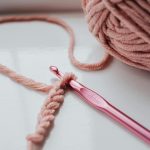Do you ever wonder how your favorite pair of socks came to be? The process of creating a single sock involves multiple steps and intricate techniques. From selecting the right materials to adding finishing touches, every aspect of sock manufacturing is crucial in producing comfortable and durable socks that we all love to wear.
In this article, you will unravel the mysteries behind sock manufacturing. You will learn about the various stages involved in making a sock, starting from the selection of materials to the finishing touches. Additionally, you will discover the environmental impact of sock production and explore the future of sock manufacturing.
So, get ready to dive into the fascinating world of sock production and discover how your favorite pair of socks came to be!
Table of Contents
Materials Selection
Let’s talk about the exciting part of sock-making: choosing the perfect materials! The materials used in making socks must be carefully selected to ensure the highest quality product.
One of the most important factors to consider is the type of fiber used. Common fibers used in sock-making include cotton, wool, and synthetic materials such as nylon and polyester. Cotton is a popular choice for socks because it’s soft, breathable, and absorbent. Wool is another popular choice, especially for cold weather socks, because it’s warm and insulating. Synthetic materials like nylon and polyester are often added to socks to improve their durability, stretch, and moisture-wicking properties.
Once the fibers have been selected, they’re spun into yarn and then knit or woven into the sock shape. The thickness of the yarn and the knit or weave pattern also play a role in determining the quality and comfort of the final product.
So, the next time you put on a pair of socks, take a moment to appreciate the careful selection and manufacturing process that went into making them!
Yarn Knitting
Knitting yarn into a loop creates the foundation for the cozy coverings we all know and love. The process of yarn knitting begins with selecting the right materials. The yarn used for socks is usually a blend of synthetic and natural fibers, chosen for their strength, softness, and ability to wick away moisture.
Once the yarn is selected, it’s loaded onto a knitting machine, and the process begins. The machine works by feeding the yarn through a series of hooks and needles that interlock the fibers to create a seamless tube. This tube is then cut into individual sock shapes and sent for finishing.
The finishing process involves washing, drying, and packaging the socks for distribution. During this stage, any loose fibers or imperfections are removed to ensure that the socks are comfortable and durable. The end result is a pair of socks that’s ready to keep your feet warm and cozy for years to come.
Toe Closing
When it comes to closing the toe of a knitted sock, there are a few different methods you can choose from. Some methods involve grafting the stitches together, while others involve sewing the toe closed.
It’s important to aim for a seamless finish, as any roughness or bumps in the toe can cause discomfort while wearing the socks.
Different methods of toe closing
You may be surprised to learn that there are various methods of closing the toe of a sock, each with their own unique advantages and disadvantages.
The most common method used is the ‘sewn toe,’ which involves sewing together the two sides of the sock at the toe using a specialized sewing machine. This creates a flat seam that is comfortable and doesn’t rub against your toes. However, it can be more time-consuming and costly for manufacturers, as it requires specialized machinery and skilled labor.
Another method is the ‘linked toe,’ which involves knitting the stitches together at the toe using a linking machine. This creates a seamless toe that is more comfortable and less likely to cause irritation. It also allows for more flexibility in design, as the sock can have a more intricate pattern without worrying about disrupting the seam. However, this method can also be more time-consuming and costly for manufacturers, as it requires specialized machinery and skilled labor.
Ultimately, the method used for toe closing depends on the manufacturer’s priorities and the intended use of the sock.
Importance of a seamless toe
Having a seamless toe is crucial for ensuring maximum comfort and minimizing irritation while wearing your favorite pair of socks. When socks are manufactured, the toe area is usually the last part to be closed. If the seam is not properly aligned or if the thread used is too thick, it can cause discomfort and irritation to the wearer.
This is especially true for people with sensitive skin or those who engage in activities that require them to wear socks for extended periods of time. A seamless toe eliminates the need for a bulky seam that can cause discomfort and irritation.
This is achieved through a process called ‘computerized knitting’ where the sock is knit in a continuous loop without the need for a seam. This technology not only provides a seamless finish but also allows for better fit and flexibility.
So, the next time you go sock shopping, look for socks with a seamless toe to ensure maximum comfort throughout the day.
Heel Turning
Now that you’ve reached the heel turning stage, it’s time to shape the heel of the sock using short rows. This is a crucial step in the manufacturing process, as it ensures the sock will fit comfortably on your foot.
Short rows are used to create a curve in the heel of the sock, which helps to prevent bunching and slipping. To start the heel turning process, the knitting machine will create a series of short rows on one side of the sock. This is done by turning the fabric back and forth, creating a wedge shape that gradually narrows towards the center of the heel.
Once the desired shape is achieved, the machine will switch back to knitting in the round, creating a seamless transition between the heel and the rest of the sock. The heel turning stage is a highly technical process, requiring precision and attention to detail.
It’s important to get it right, as a poorly shaped heel can make the sock uncomfortable to wear. But with the right equipment and skilled operators, manufacturers are able to produce high-quality socks that fit perfectly and provide all-day comfort.
Finishing Touches
Get ready to add the final touches that’ll make your new favorite pair of socks stand out from the rest. After the heel turning process, the socks are almost complete.
The next step is to sew the toe closed using a sewing machine. This process is similar to the heel turning process, but instead of decreasing the stitches, you’ll increase them until the toe is closed.
Once the toe is closed, the socks go through a process called ‘boarding.’ This is where the socks are stretched and shaped to ensure they fit properly and have a smooth appearance. This is done using a machine that heats the socks and then stretches them over a mold. The socks are then cooled down while still on the mold to maintain their shape.
The final step is adding the finishing touches, such as trimming any excess threads and adding a label. The label will typically include the brand name, size, and care instructions.
After this, the socks are inspected for any defects and then packaged for shipment. Now you have a complete pair of socks that have gone through a detailed manufacturing process to ensure they’re comfortable, durable, and stylish.
Environmental Impact
As we wear and dispose of garments, they leave a lasting impact on our environment. The same goes for socks. The manufacturing process of socks involves the use of materials such as cotton, polyester, and nylon, which aren’t biodegradable.
The production of these materials also requires a significant amount of energy and resources, leading to environmental degradation. Additionally, the dyeing and finishing processes of socks contribute to water pollution.
There are ways to reduce the environmental impact of sock production. One way is to use sustainable materials such as organic cotton, bamboo, and recycled polyester. These materials are biodegradable and have a lower carbon footprint.
Another way is to implement eco-friendly dyeing and finishing processes that minimize water pollution. Some companies are also implementing sustainable practices such as using renewable energy sources, reducing waste, and promoting fair labor practices.
As consumers, we can also contribute to reducing the environmental impact of socks by choosing sustainable options and taking care of our socks to prolong their lifespan. We can also support companies that prioritize sustainability and hold them accountable for their environmental and social impact.
By working together, we can minimize the negative impact of sock production on our environment and create a more sustainable future.
Future of Sock Manufacturing
As you consider the future of sock manufacturing, it’s important to take note of the advancements in technology that are shaping the industry. From automated knitting machines to sustainable materials, the possibilities for innovation are endless.
Additionally, changing consumer trends and demands are also driving the future of sock manufacturing. There is a focus on comfort, performance, and sustainability.
Advancements in technology
You’ll love how technology has revolutionized the sock-making process, making it faster and more efficient than ever before! With the help of advanced machinery and computer programs, manufacturers can now produce socks in a matter of minutes instead of hours. The use of automation has also resulted in fewer errors and defects, ensuring that every pair of socks meets the highest quality standards.
One of the most significant advancements in sock manufacturing is the use of 3D knitting technology. This innovation allows manufacturers to create socks that fit perfectly and provide optimal comfort and support. The process involves using a computer program to design the sock’s shape and size, which is then translated into a machine-readable format. The machine then knits the sock using a variety of yarns and materials, resulting in a seamless, custom-made product. Check out the table below to see some of the different materials that may be used in the sock-making process:
| Material | Properties | Common Uses |
|---|---|---|
| Cotton | Soft, breathable, absorbent | Everyday socks |
| Wool | Warm, insulating, moisture-wicking | Winter socks |
| Nylon | Durable, stretchy, lightweight | Athletic socks |
As you can see, technology has brought about significant changes in the way socks are made. These advancements have not only made the manufacturing process faster and more efficient but have also resulted in better-quality products that meet the needs of consumers. So next time you slip on a pair of socks, take a moment to appreciate the incredible technology that went into creating them!
Changing consumer trends and demands
It’s amazing to see how much the fashion industry has evolved to cater to the ever-changing demands and preferences of consumers. With the rise of social media and online shopping, consumers have become more informed and vocal about their preferences.
As a result, fashion brands are becoming more attentive to consumer feedback and are adapting their products to meet their needs. One of the most significant changes in consumer demand is the emphasis on sustainability and ethical production.
Consumers are now looking for products that are not only fashionable but also environmentally friendly and ethically made. This shift in demand has led to the rise of eco-conscious fashion brands that prioritize sustainable materials and transparent production processes.
As a result, fashion manufacturers are also adapting to these trends by adopting sustainable practices and investing in more eco-friendly production methods.
- How Does Ring Spun Cotton Affect Garment Fit and Shape Retention? - August 13, 2024
- What Are the Challenges in Producing Ring Spun Cotton? - August 13, 2024
- Is Ring Spun Cotton Suitable for Plus-Size Clothing? - August 13, 2024



